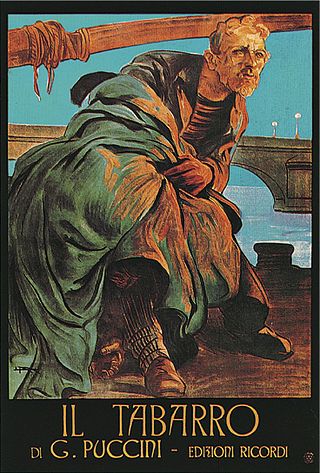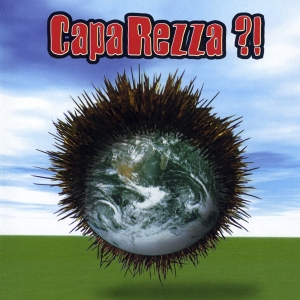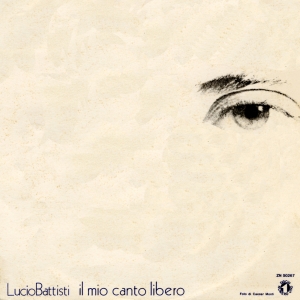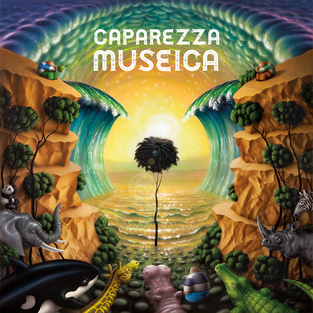
Domenico Modugno was an Italian singer, actor and, later in life, a member of the Italian Parliament. He is known for his 1958 international hit song "Nel blu dipinto di blu", for which he received the first Grammy Awards for Record of the Year and Song of the Year. He is considered the first Italian cantautore.

Il tabarro is an opera in one act by Giacomo Puccini to an Italian libretto by Giuseppe Adami, based on Didier Gold's play La houppelande. It is the first of the trio of operas known as Il trittico. The first performance was given on December 14, 1918, at the Metropolitan Opera in New York City.

Massimo Ranieri is an Italian singer, actor, television presenter and theatre director.

Roberto Vecchioni is an Italian singer, songwriter, and lyricist.

Iva Zanicchi is an Italian pop singer and politician. She has a mezzo-soprano voice and is nick-named by the press as "Eagle of Ligonchio".

Massimo "Max" Pezzali is an Italian singer-songwriter.

Umberto Bindi was an Italian singer-songwriter. He is especially known for the popular song he co-wrote with Gino Paoli, Il Mio Mondo, which he recorded in Italian in 1963, and ''La musica è finita'' It was later performed by singers in English and other languages.

Le dimensioni del mio caos is the fourth album by the Italian rapper Caparezza, released on April 11, 2008.

Lino Banfi is an Italian actor and screenwriter. Since 1960 he has appeared in more than 100 films.

?! is the first studio album by Italian rapper Caparezza, after two releases published under the former stage name Mikimix.

Il sogno eretico is the fifth studio album by the Italian rapper Caparezza, released on March 1, 2011. The title of the album contains a pun: in Italian "eretico" sounds like "erotico" (erotic), so that the reader thinks about a kind of parody of "The erotic dream".

Il Volo is an Italian operatic pop trio, consisting of Gianluca Ginoble, Piero Barone, and Ignazio Boschetto. They describe their music as "popera". Having won the Sanremo Music Festival 2015, they represented Italy in the Eurovision Song Contest 2015 with the song "Grande amore", finishing first in the televote and third overall.

Due anni dopo is the second album by Italian singer-songwriter Francesco Guccini. It was released in 1970 by EMI.

Caramella is a studio album by Italian singer Mina, released by PDU and Sony Music on 25 May 2010.

"Il mio canto libero" is a song written by Italian singer-songwriter Lucio Battisti and lyricist Mogol. The song was recorded by Battisti for the album of the same title, and released as a single in November 1972 for Mogol's recording label Numero Uno. The song was a commercial success in Italy, topping the Musica e dischi singles chart for nine consecutive weeks in 1973 and becoming the third best-selling single of the year. During the following years, it was covered by several artists, and it became a classic of Italian popular music. It was certified double platinum by the Federation of the Italian Music Industry in 2024, for domestic equivalent sales exceeding 200,000 units since 2009.
"A te" is a song recorded by Italian singer-songwriter Jovanotti and written by Jovanotti himself with Franco Santarnecchi. After being included in the album Safari, the song was released as the second single from the set. Launched during the Sanremo Music Festival 2008, where Jovanotti was invited as a guest, the single became a commercial success, reaching the top spot of the Italian Singles Chart for eight consecutive weeks, later becoming the best-selling single of 2008 in Italy.
Arianna Martina Bergamaschi, also known mononymously as Arianna, is an Italian singer, songwriter, stage actress and television presenter. She began her career when she was 7 years old, she started participating in numerous ad campaigns, and while still very young, participated in the TV shows "Fantastico 2" and "Fantastico 3", and in the 1989 Rai drama "I Promessi Sposi" and began studying dance with duo Brian and Garrison.

Museica is the sixth studio album by the Italian rapper Caparezza, released on April 22, 2014.

Mazzini canta Battisti is a compilation album by Mina, released in 1994 by PDU.
Paola Palma is an Italian lyricist, entrepreneur and conductor.

















